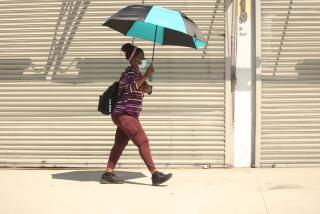California’s April heat wave is a time to be extra cautious about children and pets in parked cars
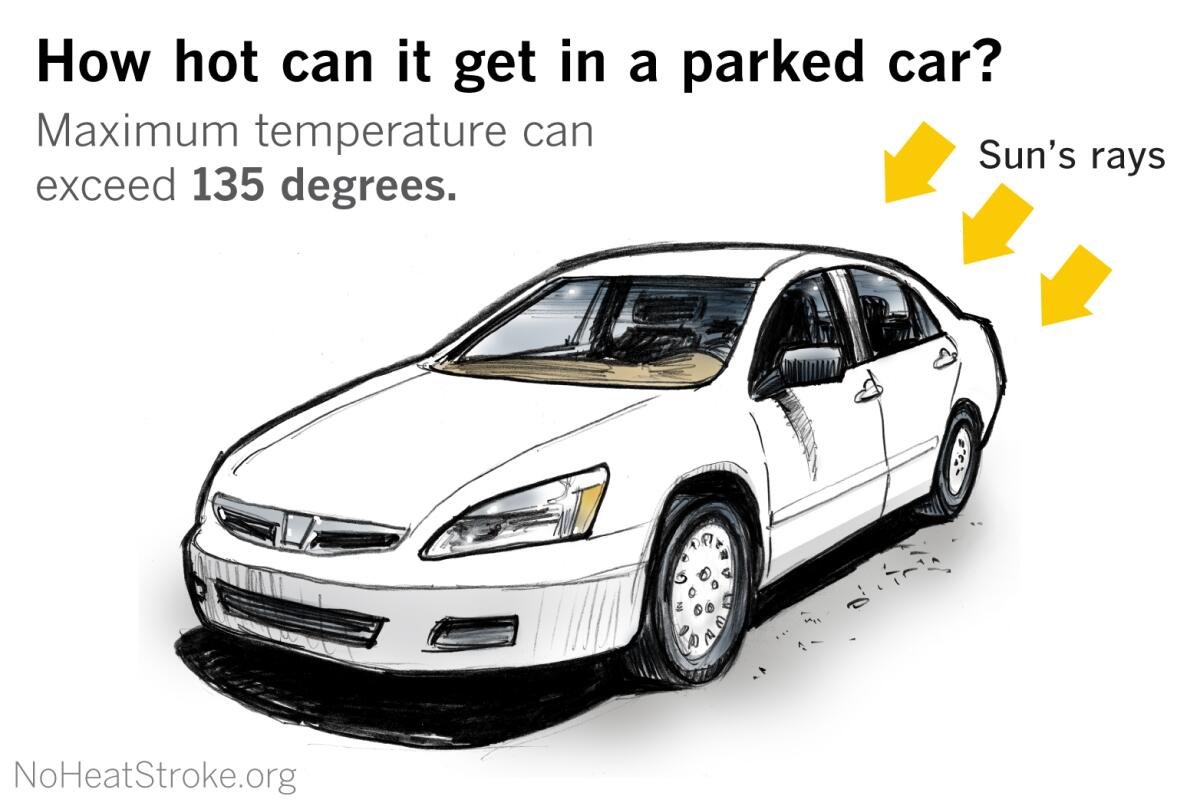
With the coronavirus outbreak, it might be tempting to leave a child in the car — for just a few minutes, to avoid exposing her to the virus — while you run into the grocery store or pharmacy.
Don’t do it.
First of all, it is illegal to leave a child unattended in a motor vehicle in California.
Secondly, heatstroke can occur quickly, even on relatively cool days. During a heat wave, such as what Southern California is experiencing, it can be lethal in minutes.
“People always underestimate how hot a car can get,” said veteran meteorologist Jan Null, who has studied the danger and created NoHeatStroke.org.
Heatstroke can come quickly, occurring when the body’s core temperature reaches 104 degrees. If the body’s core temperature reaches 107 degrees, it is usually fatal. And a child’s body warms three to five times faster than an adult’s.
“And leave the pets at home,” Null adds. “Their threshold is about the same.”
Some 849 children have died of pediatric vehicular heatstroke — being left in or gaining access to a hot car — in the U.S. since 1998, and 100% of these deaths could have been prevented. In 2019 there were 52 such deaths nationally. The average annual number of such child heatstroke deaths from 1998 to 2019 is 39.
The children ranged in age from 5 days to 14 years, with more than half under the age of 2 years. Null studied the circumstances of these deaths and found that about 54% had been forgotten by a caregiver; 25% gained access to the car on their own; 19% were knowingly left by a caregiver; and the remaining 1.5% died under unknown circumstances.
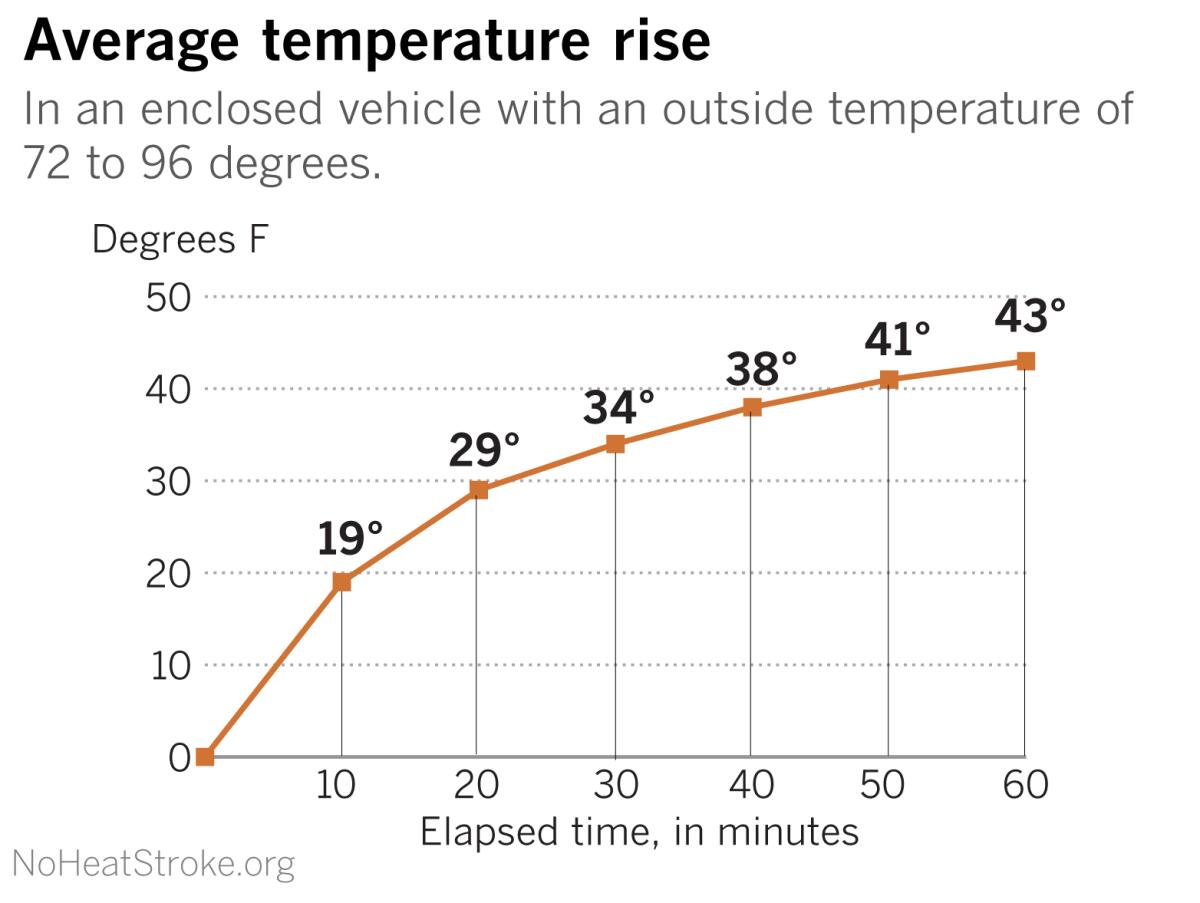
Null also studied how fast a car can heat up. He found that two-thirds of the heating takes place in the the first 20 minutes. “Cracking” the windows — leaving the window open slightly — had little effect. That made a difference of less than three degrees.
Exterior color of the vehicle also made little difference, but the vehicle’s interior color was a big factor.
The sun’s rays pour through the windows. This is shortwave radiation, Null explains. The windows and air are essentially transparent, and are warmed a little. But this shortwave radiation heats the objects it strikes. A dark dashboard, steering wheel or seat can be warmed from 180 to more than 200 degrees. These objects, including a child seat, then heat the surrounding air by conduction and convection, and give off longwave radiation. Thus, these surfaces and objects very efficiently warm the trapped air inside the vehicle.
As the chart above shows, even on a 72-degree day, the temperature will rise an average of 43 degrees, to 115 degrees, in an hour. On a 90-degree day, the interior of the car could reach 133 degrees in an hour.
The interior temperature of a car can be 50 degrees higher than the temperature outside, and 80% of the heat increase happens in the first 30 minutes. So a child shouldn’t be left in a car for even a short time.
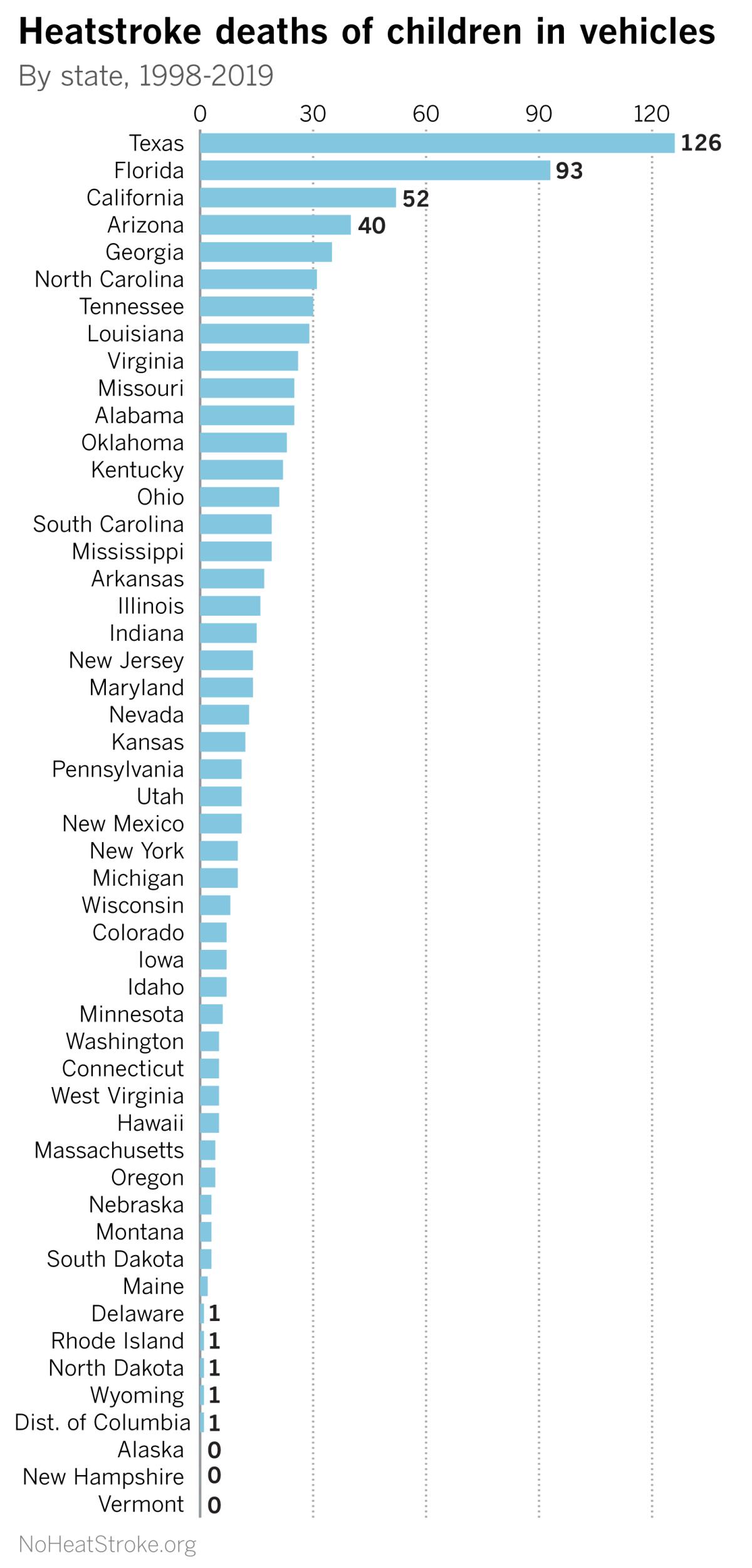
Null found that the highest number of child heatstroke deaths occurred on Thursday and Friday, possibly suggesting a correlation with fatigue later in the workweek.
About 30% of the deaths were among children less than a year old. And Null found that forgetting a child in a car has happened to people in all walks of life, from barbers to baristas, from students to teachers and principals, from lawyers, judges and administrators to waiters, police officers and tradesmen. “It can happen to anybody,” Null concluded.
Under Kaitlyn’s Law, signed into law in 2001, it is illegal in California to leave a child 6 years or younger in a car when conditions such as heat or cold could threaten the child’s life, or when the vehicle is running or has keys in the ignition or both.
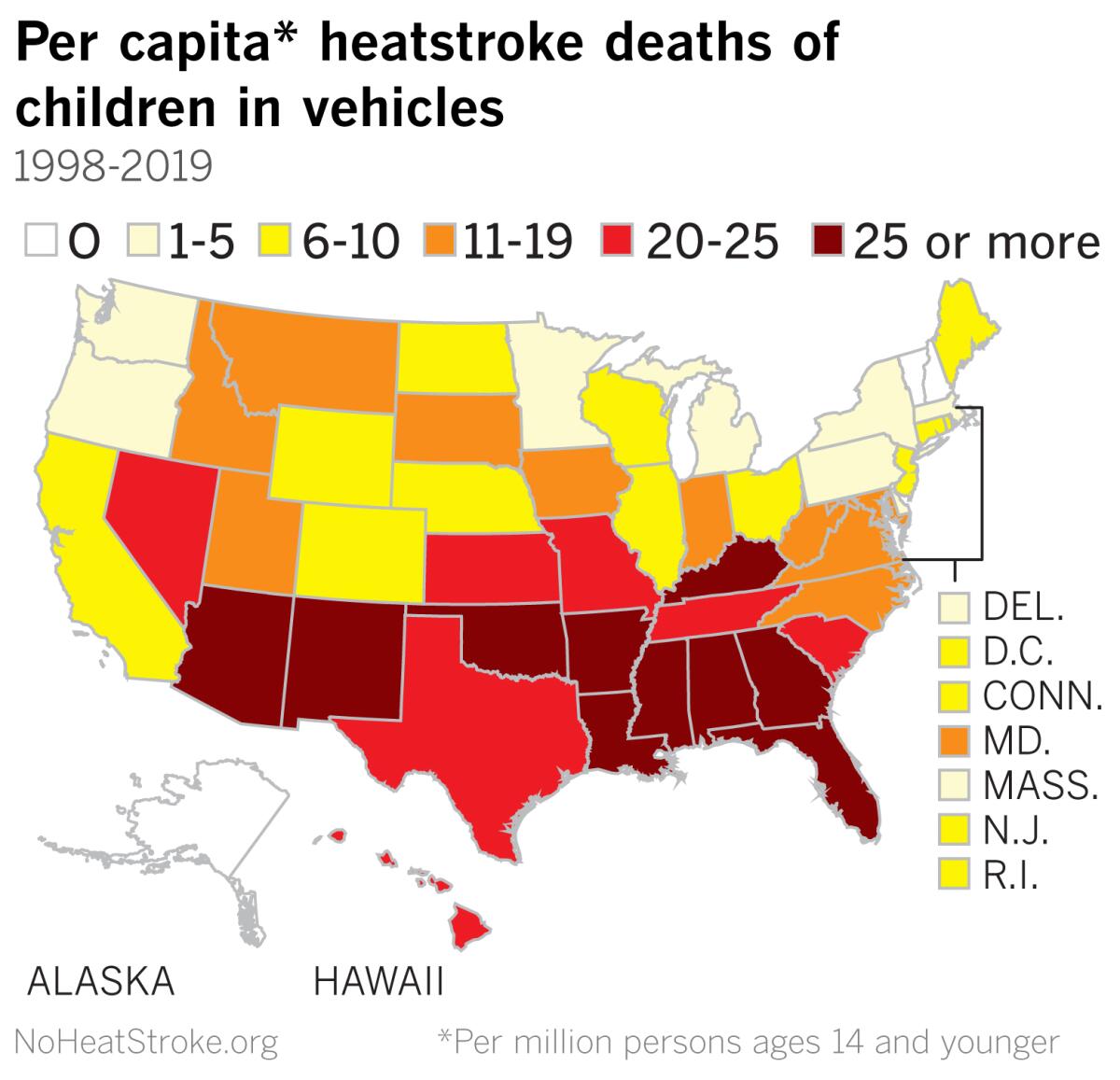
The law is named for Kaitlyn Russell of Corona, a 6-month-old who died after being left by a babysitter in a parked car for more than two hours.
Breaks in daily routine — which have been common features for many during the coronavirus outbreak — can lead to momentary lapses in memory, officials warn. They suggest creating reminders, such as placing a briefcase, purse or cellphone on the back seat next to the child — something you will need to go into the back seat to retrieve upon arrival at your destination.
Cars should always be kept locked so kids can’t get into them on their own, and special care should be taken when loading and unloading, officials say.
Officials urge that if you see a child alone in a car, immediately call 911. Emergency personnel are trained to respond to such situations.
More to Read
Sign up for Essential California
The most important California stories and recommendations in your inbox every morning.
You may occasionally receive promotional content from the Los Angeles Times.

